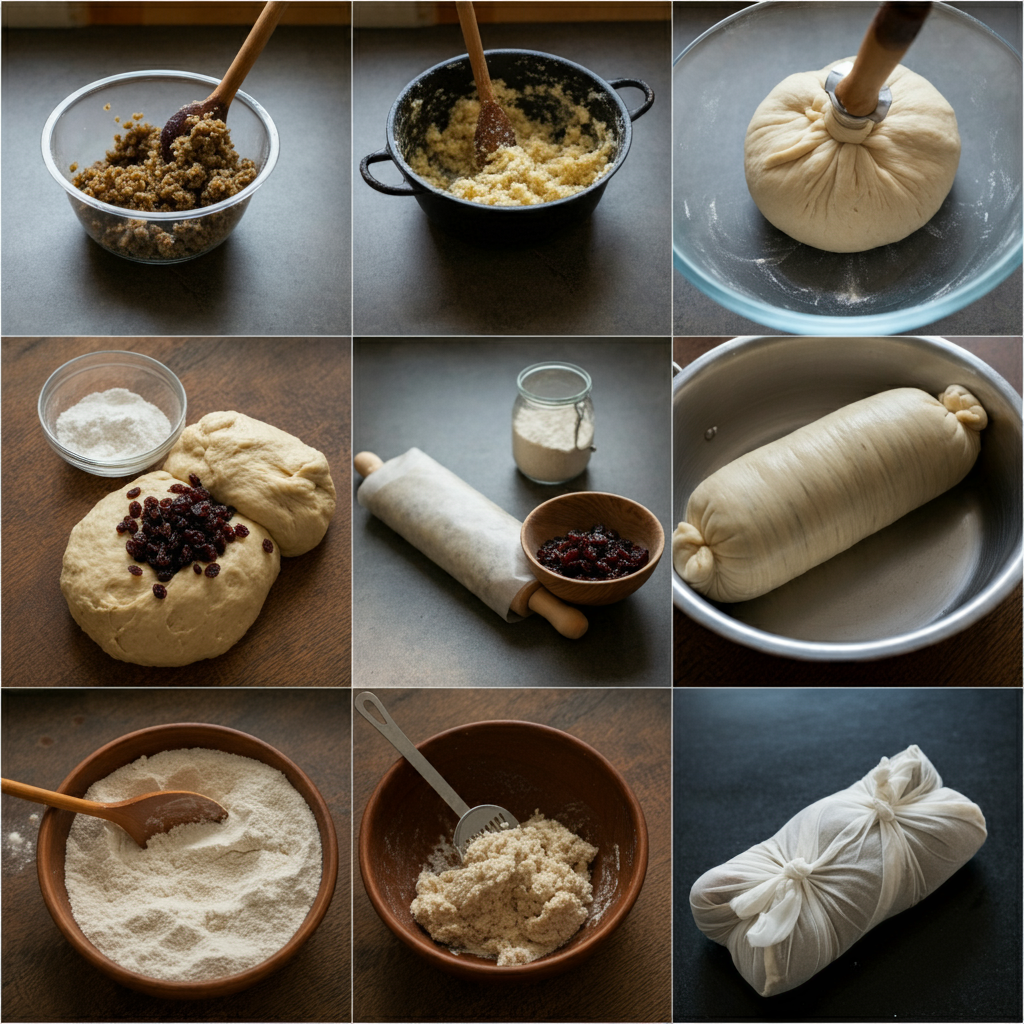What Is Spotted Dick? History, Meaning, and How to Make This Classic British Dessert

Table of Contents
If you’ve ever dined in the UK, you might have come across a dish with a very curious name — Spotted Dick. This traditional British pudding has sparked conversations, laughter, and a fair amount of curiosity. But what exactly is Spotted Dick, and why is it called that? Let’s dive into the history, the ingredients, and the fascinating story behind this iconic dessert.
A Classic British Dessert
Spotted Dick is a traditional steamed suet pudding, studded with dried fruits, typically currants or raisins. It is often served hot with a generous splash of custard, making it a comforting treat, especially in the colder months. The dish has been enjoyed for centuries, and while its name may seem odd to modern ears, it has been an essential part of British culinary culture.
The texture of Spotted Dick is dense and sponge-like, a result of the suet (a type of hard animal fat) used in the dough. This unique pudding is usually served in individual portions, though it can also be prepared in larger family-style servings.
The Name: A Source of Curiosity
The most notable aspect of Spotted Dick is undoubtedly its name. For many, the term “dick” conjures up all sorts of inappropriate thoughts, which can lead to some awkward moments when ordering this dish. But the truth behind the name is much more innocent than one might think.
The word “dick” is actually an old English term for pudding. The word has been in use since the 19th century and was used to describe a variety of sweet and savory dishes, typically steamed or boiled. Over time, the term evolved to become synonymous with the suet-based puddings that were popular in British households. So, Spotted Dick is essentially just a “spotted pudding” — the “spotted” part referring to the dried fruit that gives the pudding its characteristic flecks.
The History of Spotted Dick

The origins of Spotted Dick can be traced back to the 19th century, though its roots go deeper into British culinary tradition. Suet puddings, the foundation of Spotted Dick, were popular in the UK long before the name became commonly used. These rich, hearty dishes were often made with ingredients that could be stored for long periods, making them perfect for the working-class families of the Industrial Revolution.
Historically, suet puddings were made using simple ingredients such as suet, flour, sugar, and dried fruits. They were steamed for several hours, which helped retain moisture and flavor. In the case of Spotted Dick, the currants or raisins were the “spots” that gave the pudding its signature look. The dish was often served as a hearty dessert in working-class homes and was later popularized in British public houses and restaurants.
Why Did It Become So Popular?
The widespread popularity of Spotted Dick can be attributed to its practicality. It was an affordable and filling dessert, providing families with much-needed sustenance. The use of suet, a byproduct of butchering animals, made it a cost-effective fat that could be easily incorporated into the dish. Moreover, currants and raisins were staples in many British households, ensuring that the pudding was not only delicious but also nutritious.
As Britain expanded its empire during the 19th and early 20th centuries, the dish became a beloved part of British cuisine in many regions. The pudding’s popularity endured through the wars and rationing periods of the 20th century, thanks to its affordability and satisfying qualities.
In the post-war years, as Britain embraced convenience food, Spotted Dick even made its way into canned form. Today, the canned version is still widely available in supermarkets across the UK, often enjoyed with a quick microwave custard.
Spotted Dick: A Dish with a Humorous Reputation
Despite its long history, Spotted Dick has also found itself the subject of humor and innuendo due to the unfortunate connotations of the word “dick.” In the 21st century, this pudding has been part of countless jokes and puns, especially in the world of British comedy.
However, beyond the laughter and the cheeky remarks, Spotted Dick remains a beloved symbol of British culinary tradition. Its comforting, rich flavors and history as a working-class staple have earned it a special place in the hearts of many. Whether served in a cozy pub, a fancy restaurant, or as a canned dessert, Spotted Dick continues to be a part of British culture.
How to Make Spotted Dick at Home
If you want to try making Spotted Dick at home, the recipe is surprisingly simple. Here’s how:

Ingredients:
- 1 cup of suet
- 1 cup of self-raising flour
- 1/4 cup of sugar
- 1/2 cup of dried currants or raisins
- A pinch of salt
- 1/2 cup of milk
- 1 tablespoon of lemon zest
- 1/4 cup of butter (optional)
- Custard for serving
Instructions:
- In a large bowl, combine the suet, flour, sugar, salt, and dried currants or raisins.
- Add the milk and lemon zest, mixing until the dough comes together.
- Form the mixture into a pudding shape and wrap it in a cloth or foil.
- Steam the pudding for about 2 hours, ensuring it is cooked through.
- Serve the pudding hot with a generous helping of creamy custard.
Conclusion: Spotted Dick’s Legacy
While the name might raise a few eyebrows, Spotted Dick is much more than just a funny-sounding dish. It’s a piece of British history, a delicious dessert that has stood the test of time. From its humble beginnings as a working-class pudding to its current status as a cherished classic, Spotted Dick has a legacy that continues to delight generations of dessert lovers.
So the next time you’re in the UK or at a British restaurant, don’t be afraid to give this unique pudding a try. After all, it’s more than just a dessert — it’s a taste of history, humor, and heartwarming comfort all in one bite.



